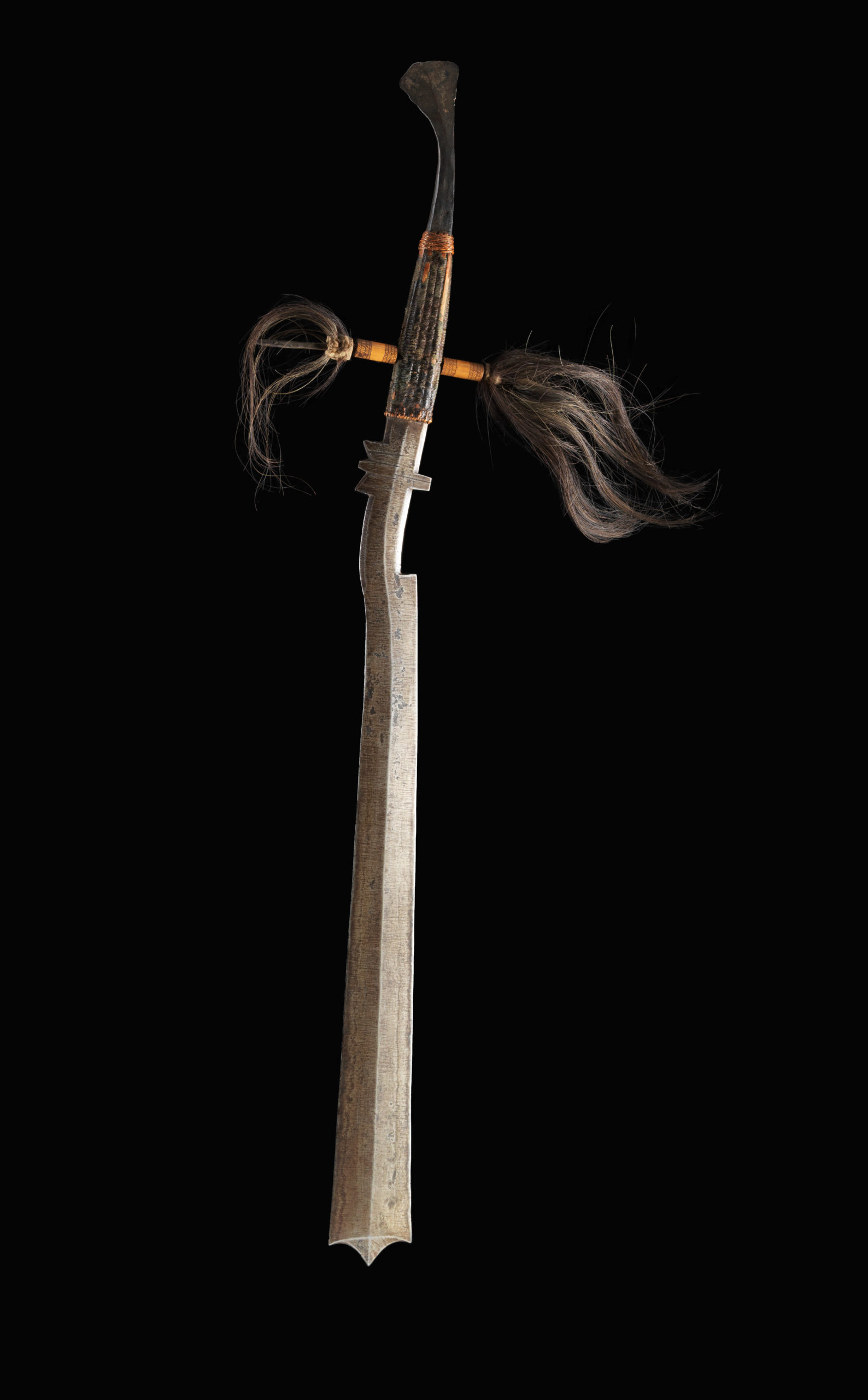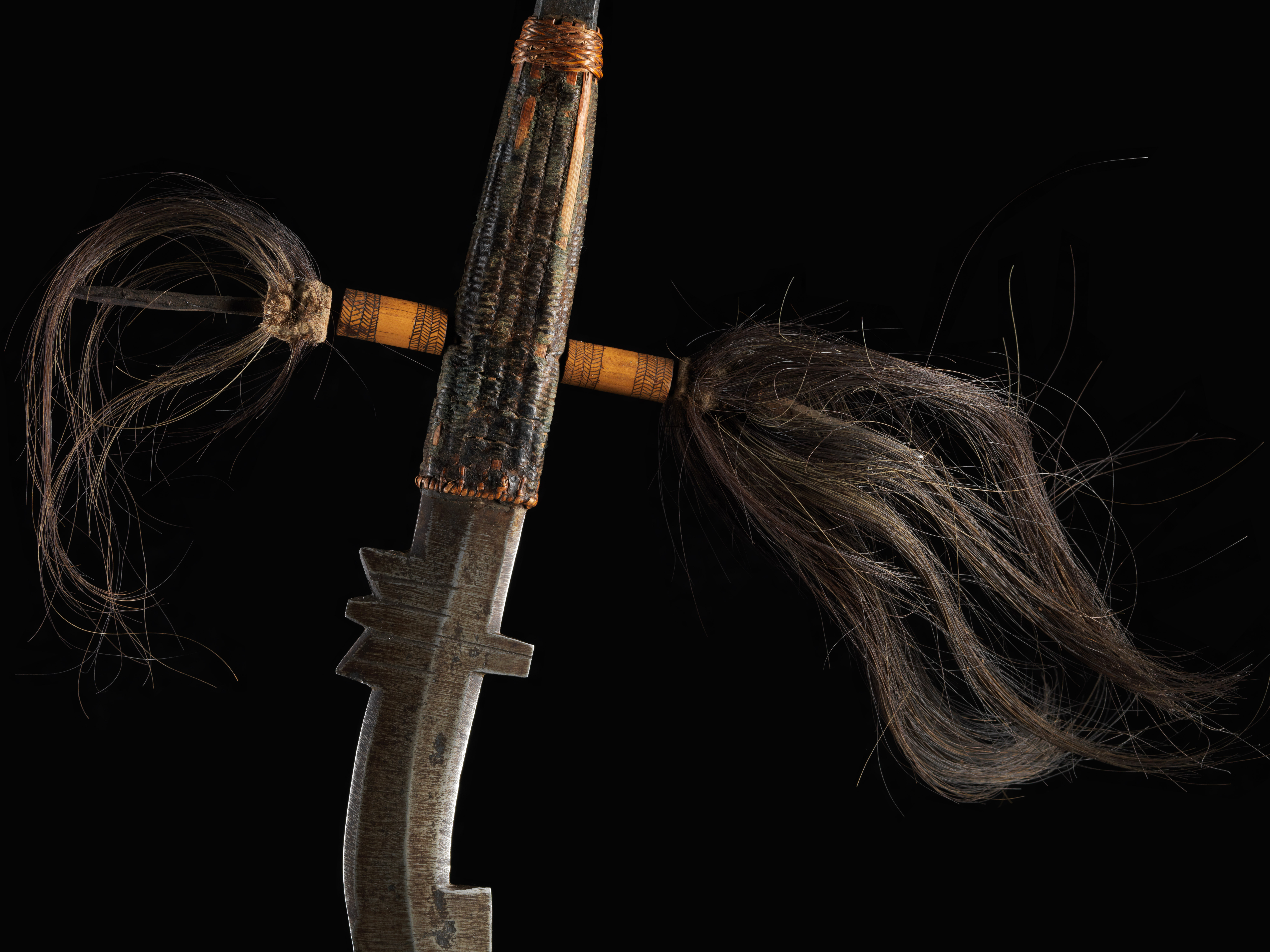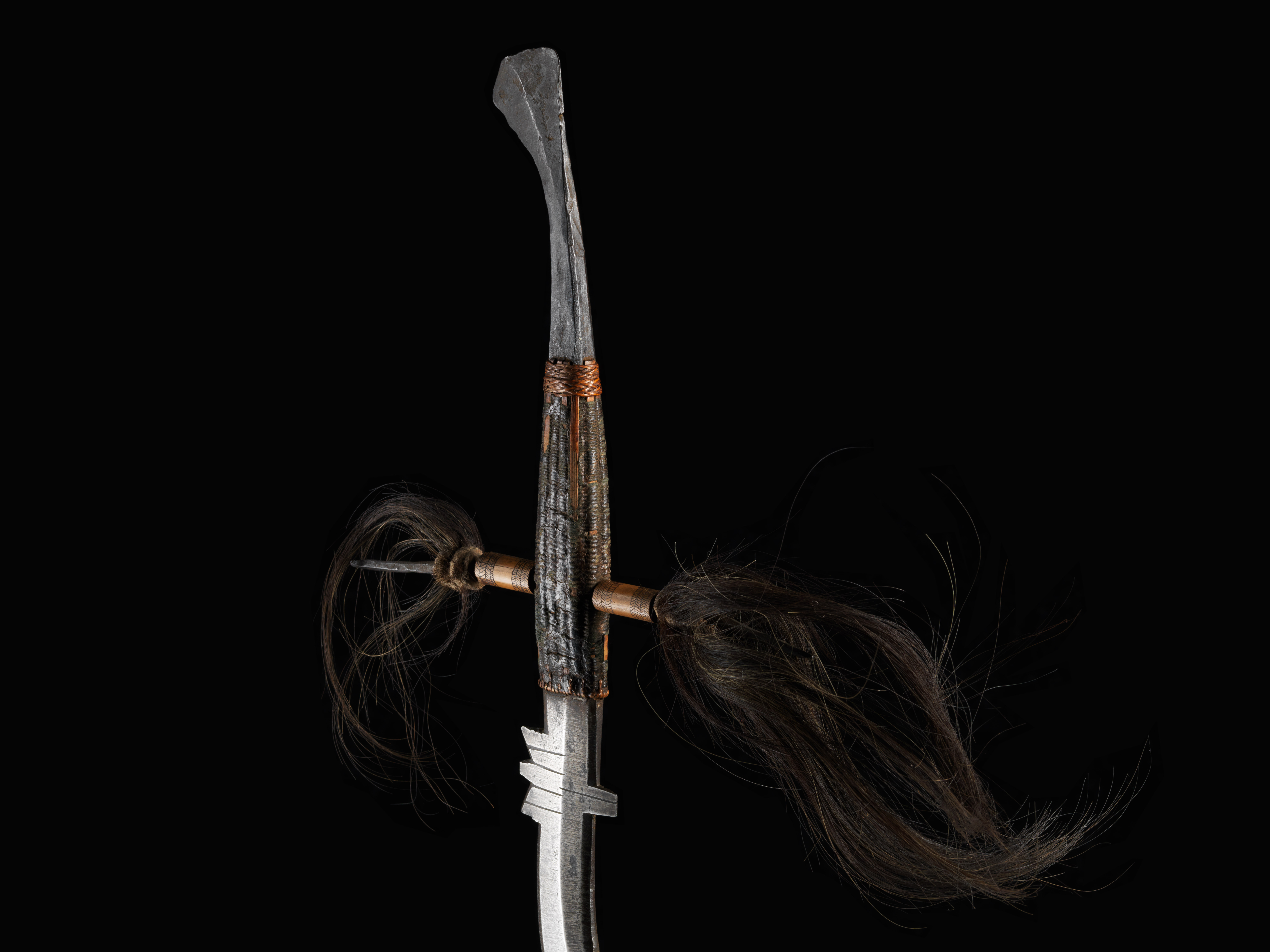Sword „mil-am“
The sword is completely forged from one piece of steel. The metal structure, which has a distinct texture, suggests local manufacture. The blade is double-edged, has a rhombic cross-section and widens towards the front. It is primarily designed as a cutting weapon. The blunt blade base shows a widened area protruding from the profile with triangular incisions and notch filing. The handle, which is braided with textile fibres for ease of handling, ends in a flat, tongue-like end piece. A slender steel rod runs through the transition area between blade and handle. Tufts of human hair are attached to it. The stick is fitted with bamboo tubes.
The Garo speak a Tibeto-Burmese language. They live in the politically Indian states of Meghalaya, Assam, Tripura, Nagaland and some neighbouring states of Bangladesh. They call themselves A-Chik Mande (literally “hill people”) or just A-Chik. According to their own tradition, the Garo immigrated from Tibet (on Garo: Tibotgre) to the Garo highlands around 400 BC. Descriptions of the Indian Mughal armies and the British, who invaded in the 19th century, emphasise above all the savagery of the warriors and the custom of headhunting. According to early reports, a man’s status and marriageability was determined by the number of heads he could show. The Garo warriors (matgrik) used only traditional weapons, which sealed their defeat against the British. Nevertheless, a famous Garo, Sonaram R. Sangma, fought partly successfully against the British occupying forces and was instrumental in the creation of a collective ethnic identity of the Garo, which had previously been defined exclusively by (matriarchal) family descent and local tribal affiliation. The distinctive form of the mil-am sword must be very old. Strikingly similar swords from North-Borneo (Sabah, Sarawak) indicate a common origin probably still from Tibet, which points to very early cultural transmission and ethnic migration.
| Object | Sword „mil-am“ |
| Culture | Garo, North East India (Assam or Meghalaya) or Myanmar |
| Time | 19th century |
| Dimensions | Length 77 cm |
| Material | Steel, wood, bamboo, human hair |






